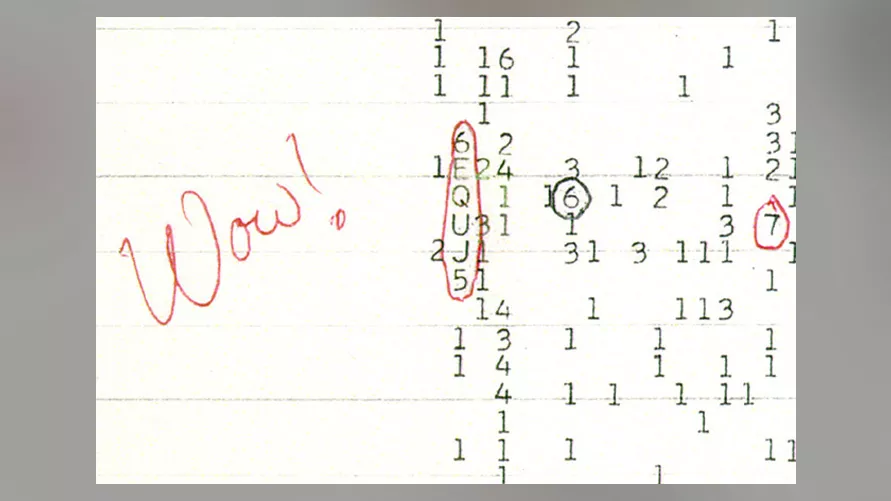On the night of Aug. 15, 1977, during a SETI search, the Ohio State University’s Big Ear telescope picked up an unknown signal that was incredibly strong but very brief, lasting a mere 1 minute and 12 seconds. It was so unexpected that its discoverer, astronomer Jerry Ehman, wrote “Wow” on the printout, thus giving this episode a name.

That was almost 45 years ago, and the signal’s meaning is still unexplained. Although it was probably the result of some natural event, a link to an alien civilization hasn’t been ruled out. The signal was received at the electromagnetic frequency band of 1420.4056 megahertz, which is produced by the element hydrogen. “Since hydrogen is the most abundant element in the universe, there is good logic in guessing that an intelligent civilization within our Milky Way galaxy desirous of attracting attention to itself might broadcast a strong narrowband beacon signal at or near the frequency of the neutral hydrogen line,” Ehman has written.
But why hasn’t the signal been repeated? Perhaps it was a one-time event to see if anyone would respond. We did the same thing in 1974 when we broadcast toward the globular star cluster M13.
The only progress is now researchers think they may have located the signal’s origin. The most likely candidate is a sun-like star located about 1,800 light-years away in the constellation Sagittarius. This star, designated 2MASS 19281982-2640123, has a temperature, diameter and luminosity almost identical to our sun.
In the meantime, all we can do is keep listening.
Taken from “Famous ‘Alien’ Wow! Signal May Have Come From Distant, Sunlike Star” by Adam Mann (https://www.livescience.com/wow-signal-origin-star?)
